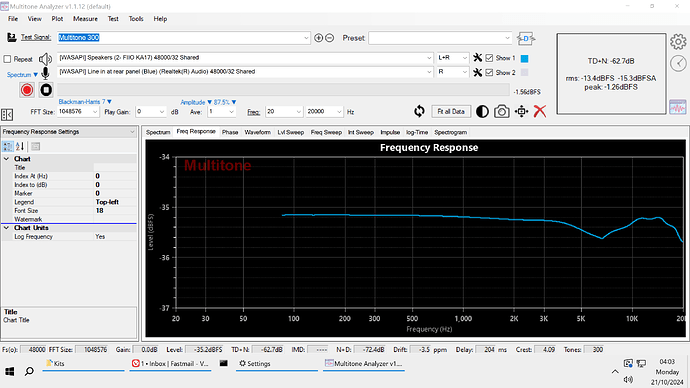Yep, caught the culprit red-handed. Turns out @pkane from ASR has this free tool that does loopback Multitone-based testing and analysis, so I could very easily do exactly the measurements I was hoping for, and got the frequency response of each device in less than a minute. The KA17 has a nearly half-decibel deep V-shaped cutout centered in the 6-10 kHz region (not sure why it moves between different replots, maybe 300 tones are not accurate enough, but when I tried 400 the app just crashed) and then also rolls off early as it nears 20 kHz, even after I selected the linear-fast filter (I suspect they did this in the amp section because the ESS datasheet doesn’t show any such rolloff for the linear-fast). The half-price Hiby FC3 meanwhile is flat all the way, as a DAC should be.
With this result plus the high power draw of the KA17, it’s definitely going right back to the classifieds where I got it.

